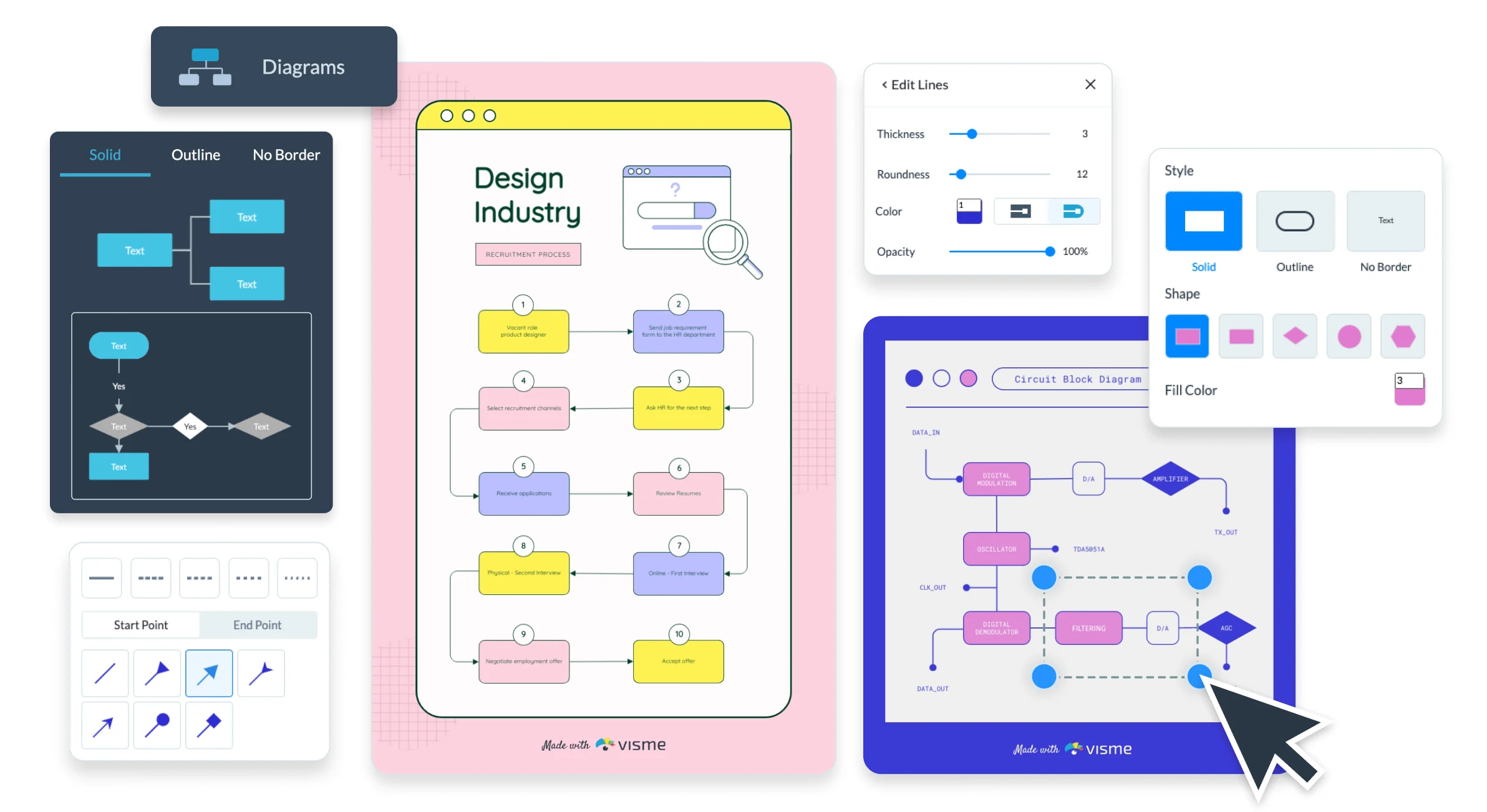In the digital age, visual communication has become a crucial part of conveying complex ideas simply and effectively. Whether you're a student, a teacher, a business professional, or someone who loves organizing thoughts visually, having the right tools at your disposal can make all the difference. Fortunately, there are several free web tools available that allow you to create diagrams, mind maps, and other types of visual representations without the need to download any software. In this article, we'll explore seven of these tools, highlighting their features and how you can use them to enhance your productivity and creativity.
1. Draw.io
Draw.io is a powerful, open-source web application that allows users to create a variety of diagrams, including flowcharts, circuit diagrams, and concept maps. Its intuitive drag-and-drop interface makes it easy to select elements from the sidebar and position them on the canvas.
Features:
- Versatile Diagram Options: Draw.io supports various diagram types, making it suitable for diverse purposes, from educational projects to professional presentations.
- Template Library: If you’re not experienced in diagram creation, Draw.io provides a range of templates to help you get started.
- Multiple Export Formats: You can save your creations in various formats, including PDF, PNG, and JPG, allowing for easy sharing and printing.
- Cloud Integration: Draw.io enables you to save your work directly to Google Drive or Microsoft OneDrive, ensuring your diagrams are always accessible.
Usage Scenarios:
Draw.io is ideal for anyone looking to create detailed diagrams quickly, be it for project management, education, or personal use.
2. GitMind
GitMind is an all-in-one tool designed for creating mind maps and diagrams. It offers a plethora of templates and the ability to start from scratch, making it adaptable to various needs.
Features:
- Task Management: GitMind allows you to prioritize tasks and track progress using symbols.
- Node Creation: You can easily add images, comments, and create sub-nodes to elaborate on your ideas.
- Free and No Registration Needed: One of the standout features of GitMind is that it is completely free and does not require registration to start creating.
Usage Scenarios:
This tool is perfect for brainstorming sessions, project planning, or any situation where visualizing tasks and ideas can enhance understanding.
3. Lucidchart
Lucidchart is an online diagramming application that provides a wide range of diagram types, including organizational charts, floor plans, and various schematic representations. While it operates on a freemium model, the free version is robust enough for quick projects.
Features:
- User-Friendly Interface: The drag-and-drop functionality simplifies the diagram creation process.
- Integration Capabilities: Lucidchart integrates with platforms like Google Drive and Microsoft Teams, enhancing collaborative efforts.
- File Formats: You can export your diagrams in JPG, PNG, PDF, and SVG formats.
Usage Scenarios:
Lucidchart is particularly useful for teams and professionals needing to visualize complex processes or structures collaboratively.
4. Coggle
Coggle is a mind-mapping tool that emphasizes simplicity and collaboration. It allows users to create diagrams quickly, focusing on a central idea and branching out into related topics.
Features:
- Real-Time Collaboration: Coggle supports multiple users working simultaneously on the same diagram.
- Unlimited Public Diagrams: The free version allows for the creation of unlimited public diagrams, making it great for sharing ideas.
- Export Options: You can save your diagrams in various formats, from TXT to PDF and JPEG.
Usage Scenarios:
Coggle is excellent for team brainstorming sessions, educational projects, and any collaborative effort that benefits from real-time input.
5. SketchBoard
SketchBoard provides a more informal approach to diagram creation, resembling a digital whiteboard. This tool is perfect for those who prefer drawing by hand rather than using structured diagrams.
Features:
- Flexible Drawing: You can sketch out ideas freely, allowing for a less constrained creative process.
- Map Creation: Whether you’re making diagrams or mind maps, SketchBoard allows you to draw elements that might not fit traditional shapes.
- Google Drive Integration: This feature ensures your sketches are easily accessible and shareable.
Usage Scenarios:
SketchBoard is suitable for brainstorming sessions, design mock-ups, and any situation that benefits from a free-form visual approach.
6. Creately
Creately is aimed at collaborative work, offering an array of diagramming and mind-mapping tools. It requires registration, but its free version provides valuable features to help users get started.
Features:
- Wide Range of Templates: Creately has a library filled with business-related templates to facilitate quick project planning.
- Collaboration Tools: The tool allows multiple users to work on the same project, making it ideal for team environments.
- Integration with Other Services: Creately integrates with cloud storage services like Google Drive and collaboration tools like Slack.
Usage Scenarios:
Creately is perfect for businesses needing a collaborative diagramming tool that enhances workflow and productivity.
7. Canva
Canva is primarily known for graphic design but also offers functionalities for creating diagrams and mind maps. It’s a versatile tool that allows users to explore their creative potential.
Features:
- Extensive Template Library: Canva boasts a collection of around 8,000 templates, making it easy to find a design that fits your needs.
- User-Friendly Interface: The drag-and-drop feature simplifies the design process, even for beginners.
- Social Media Integration: You can create designs specifically for social media, presentations, and more, along with diagramming capabilities.
Usage Scenarios:
Canva is ideal for marketers, educators, and anyone needing to create visually appealing diagrams that can also be used for presentations and social media.
Conclusion
Choosing the right tool for creating diagrams and mind maps can significantly enhance your ability to communicate complex ideas visually. The seven tools listed above—Draw.io, GitMind, Lucidchart, Coggle, SketchBoard, Creately, and Canva—offer various features that cater to different needs, whether you're looking for simplicity, collaboration, or extensive template options.
Explore these tools to find the one that best fits your requirements, and start transforming your ideas into clear, visual representations that can be shared and understood easily. With these free online resources, you can elevate your organizational and presentation skills without the burden of expensive software or complicated installations. Happy diagramming!

